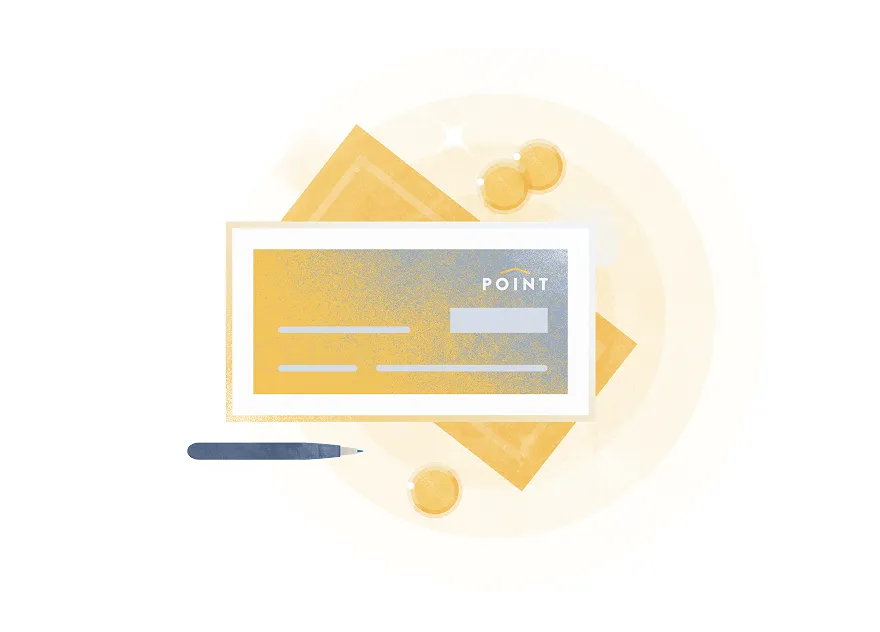If you need to borrow money and you’re not happy with your current mortgage, you can solve both problems at once with a cash-out refinance. Refinancing allows you to tap into your home equity by taking out a loan amount larger than what you currently owe. After paying off your current mortgage, you’ll receive the rest of the money in a lump sum to spend how you like.
Cash-out refinances have worked for many homeowners over the years, but — understandably — taking out a larger loan requires careful thought. We’ll cover the pros and cons of a cash-out refinance to help you make an educated decision.
Cash-out refinance pros and cons
Refinancing your mortgage carries different benefits and risks than other forms of financing. It’s essential to understand these factors and how to evaluate them in relation to your own personal situation.
Pros of a cash-out refinance
Cash-out refinances have many benefits.
- Low interest rate: Cash-out refis often charge lower interest rates compared to alternatives like personal loans, credit cards, and even home equity loans or HELOCs.
- Flexible funds use: You can generally use the money for whatever you want — debt consolidation, home upgrades, purchasing another property, starting a business, etc.
- Lump-sum financing: You can often borrow up to 80% of your home’s value, less your original mortgage balance. That can be a significant amount.
- Possible tax deduction: If you use the cash-out portion for home upgrades that build equity, you can deduct that portion of your interest charges if you itemize your taxes.
- Restructure your mortgage: Change up your interest rate, loan term, or lender. Switch from adjustable rates to fixed rates, or from an FHA loan to a conventional loan.
Cons of a cash-out refinance
There are also many reasons why you might not want to do a cash-out refinance.
- Closing costs: Typically ranging from 3% to 6%, these can be a substantial amount on such a large loan. You can roll them into the loan, but this means paying more interest.
- Foreclosure risk: You already know that you can lose your home if you default, but it bears repeating, especially if you’ll be extending your time in debt or the amount you owe.
- Longer mortgage: It’s possible to refinance so you pay off your loan faster, but many people choose longer term lengths — especially if they’re taking out a larger mortgage.
- Lender qualifications: You’ll generally need a credit score of 620 or higher, 20% or more equity in your home, stable income, and a debt-to-income ratio of 43% or less.
- More interest charges: Extending your loan term means you’ll pay interest for longer, too. This increases your long-term costs, sometimes even if you secure a lower rate.
- Seasoning requirements: Most lenders place limits on how long you’ll need to wait to refinance after taking out your home loan. Twelve months is common.
- Higher monthly payments: Taking out a larger loan often means your monthly mortgage payments will go up, too, even with a lower interest rate.

When a cash-out refinance makes sense
Another way to analyze the pros and cons of a cash-out refinance is to consider who they might be a good option for. Here are some signs that it could be the right choice for your family:
- You’re able to secure better repayment terms on your mortgage.
- You’re using the funds to pay for home upgrades and improvements.
- You have a lot of equity built up in your house and have good credit and income.
- You’ve used a cash-out refinance calculator to see if you can afford higher payments.
- You’re not jeopardizing your long-term financial goals by taking on a larger and longer-term debt.
Cash-out refinance examples
Sometimes it’s helpful to look at a few examples.
Let’s say that 10 years ago, you took out a 30-year mortgage at 6.8% APR for $500,000. You still owe around $430,000 and have 20 years remaining on your original loan term, but your credit has since improved, and you need to build a $100,000 addition onto your home to accommodate new family members moving in with you.
You checked with your lender, and they’re now able to offer you better rates on a refinance loan: 6.0% APR, instead of the 6.8% APR you’re paying now. Here are a few examples showing the costs involved with different cash-out mortgage refinance options:
Keeping the same term length
Many people who do a cash-out refinance opt for the closest term length to the remaining time in their original mortgage, since this doesn’t extend your time in debt. However, as this example shows, your monthly payment and your long-term interest costs increase as a result.
- Monthly payment: Your new monthly payment would be $3,775 instead of $3,260. You’d pay $515 more per month.
- Closing costs: $15,900, which you’d pay upfront.
- Total interest: Your new loan would charge $379,157 in interest over the life of the loan, instead of $355,288 with your old loan. You’d spend $23,869 more.
- Loan amount: Your new loan balance would be $530,000: your original balance, plus the additional $100,000 you’re borrowing.
Rolling closing costs into the loan
Not everyone can afford the upfront closing costs when doing a cash-out refinance. In this example, you’ll finance your closing costs over the life of the loan by adding them to your new loan balance. The end is that your loan costs go up even further:
- Monthly payment: Your new monthly payment would be $3,890 instead of $3,260. You’d pay $630 more per month. Financing your closing costs into your loan increases your monthly payment by $115.
- Closing costs: $15,900, which you’d roll into your new loan balance.
- Total interest: Your new loan would charge $390,597 in interest over the life of the loan, instead of $355,288 with your old loan. You’d spend $35,309 more. Financing your closing costs into your loan increases your long-term interest costs by $11,440.
- Loan amount: Your new loan balance would be $545,900: your original balance, plus the additional $100,000 you’re borrowing, as well as the $15,900 in closing costs.
New 30-year loan
Many people can’t afford the higher payment that a cash-out refi with a similar term length comes with, and so they compensate by stretching out the loan term. In this example, you’d take out a new 30-year loan, meaning that you’ll be in debt for a total of 40 years (the 10 years you’ve already paid, plus 30 more years). This does lower your short-term costs, but dramatically ramps up your long-term expenses:
- Monthly payment: Your new monthly payment would be $3,160, instead of $3,260. You’d pay $100 less per month.
- Closing costs: $15,900, which you’d pay upfront.
- Total interest: Your new loan would charge $610,492 in interest over the life of the loan, instead of $355,288 with your old loan. You’d spend $255,204 more.
- Loan amount: Your new loan balance would be $530,000: your original balance, plus the additional $100,000 you’re borrowing.
Cash-out refinance alternatives
Cash-out refis work great for many homeowners, but often, another option works even better. It’s important to explore what’s available to you so that you can be confident you’re making the right financial decisions. Here are some common alternatives:
- Personal loan: These smaller loans charge higher rates, although still much less than high-interest credit card debt. Personal loans feature quick funding times, few or no fees, and, since they’re unsecured, don’t use your home as collateral.
- Home equity loan: A home equity loan achieves the same end as a cash-out refi — i.e., a lump sum of funds — but it leaves your primary mortgage in place. Instead, it uses a secondary lien on your home to secure the loan.
- Reverse mortgage: Receive a lump sum, a line of credit, or a monthly payment in exchange for an ever-growing share of your home equity. Reverse mortgages require no monthly payments and are only available if you’re 62 or older.
- Home Equity Investment: A home equity investment (HEI) offers a lump sum of funds in exchange for a percentage of your home’s future equity, typically in 30 years, with no monthly payments. Instead, you repay the investment when you sell the home, refinance, or use another source of funds. There are no income requirements, and no need for perfect credit.
- Home equity line of credit: Flexibility is one of the biggest pros of home equity lines of credit (HELOCs). You can borrow repeatedly and repay it, or make interest-only HELOC payments. They charge higher rates and have complicated structures, though.
Frequently asked questions
Why would someone do a cash-out refinance?
Cash-out refinancing has many benefits if you need to borrow money. You might be able to get the funding you need while also qualifying for a lower rate on your mortgage, for example. Some people use it to swap from a fixed-rate mortgage to an adjustable-rate mortgage, or vice versa.
Is it bad to cash out equity in your home?
Financial experts generally don’t recommend cashing out home equity for things like debt consolidation. Home equity financing, such as HELOCs, HEIs, and cash-out refis, can be a good option for home improvements, though. That’s because you can deduct the interest and upgrades boost your home’s overall value — and your wealth along with it, too.
How much are closing costs on a cash-out refinance?
Lenders generally charge 3% to 6% in closing costs for a refinance with cash out. That means you need to plan on paying $3,000 to $6,000 for every $100,000 of your mortgage balance, including the new amount you’re taking out in cash.
Can you get a cash-out refinance without any closing costs?
Yes, and no. Some lenders offer a “no-closing-cost refinance,” but you’ll end up paying a higher cost one way or another. Typically, that’s either by rolling your closing costs into your new loan or by paying a higher interest rate than you could otherwise get.

Final thoughts
Taking out a cash-out refinance loan is a big decision, and it’s worth taking some time to be absolutely certain it’s what you want. Once you pay off your old mortgage and spend the extra funds, you can’t undo your decision. That’s why it’s important to really think about the pros and cons of a cash-out refinance, and how they apply to you. It’s worth consulting a financial advisor or credit counselor if you’re unsure whether it’s the right course for you.
No income? No problem. Get a home equity solution that works for more people.
Prequalify in 60 seconds with no need for perfect credit.
Show me my offer
Frequently asked questions

Thank you for subscribing!
.webp)















